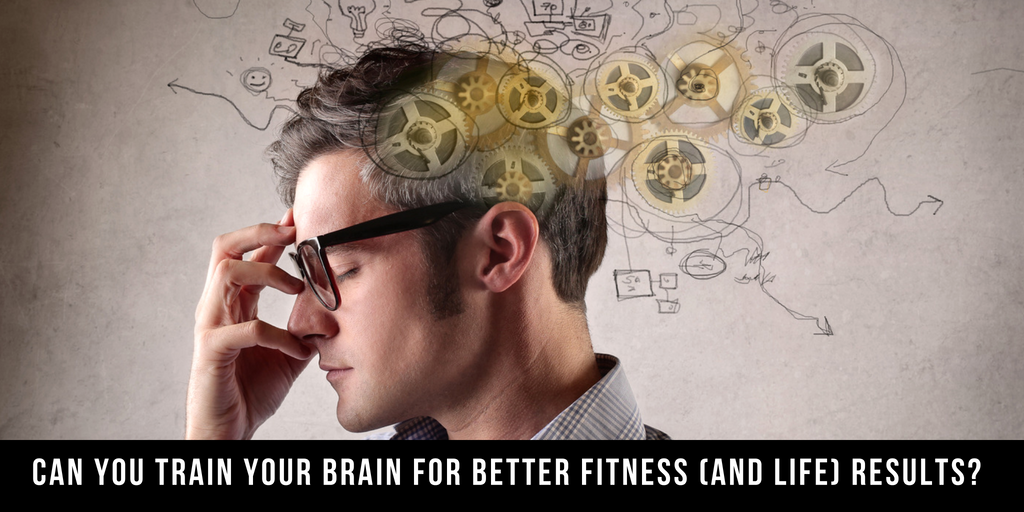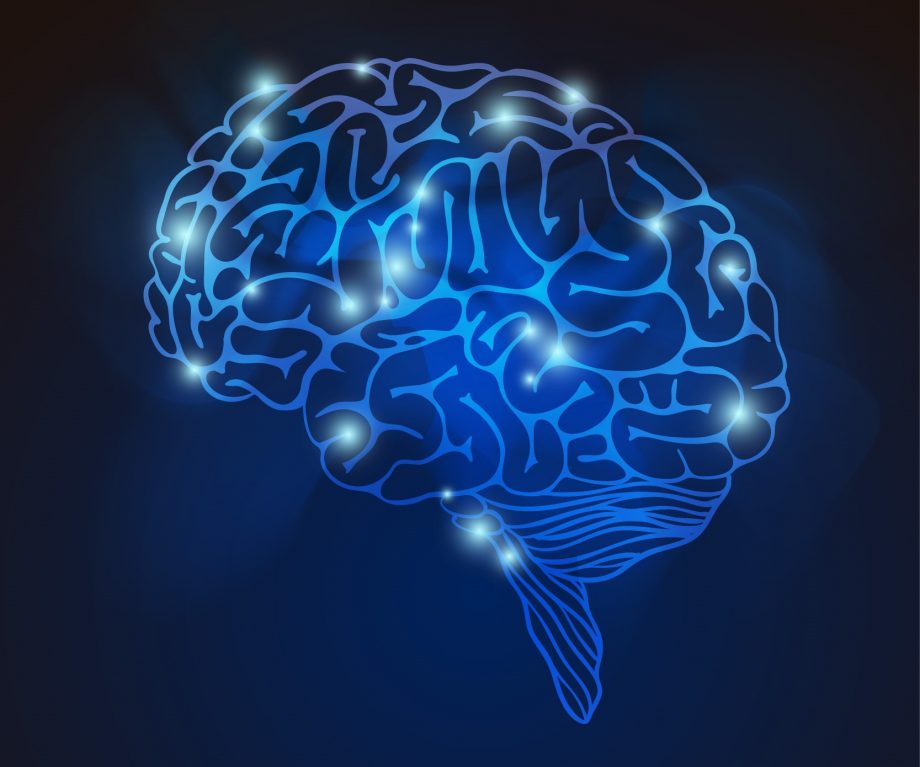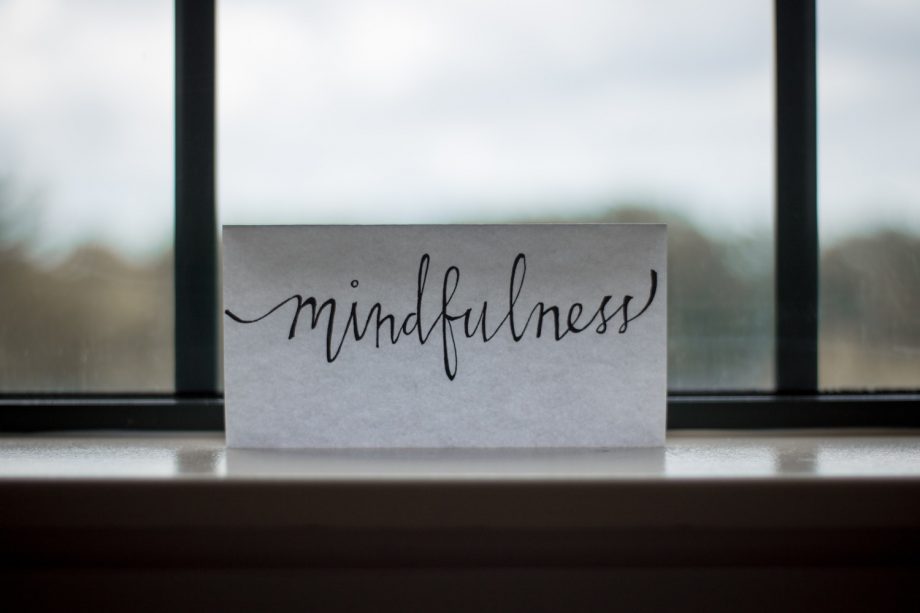Can you train your brain for better fitness results?

Maybe you’ve been training hard for a while now and you want to push the limits of your body further. Or maybe you’re at that very first step, a place where your body has very limited capabilities but you’ve made a decision to get fit and you want to pour your heart into this goal.
Either way, we can all agree that no matter where you’re at on the fitness scale (or the literal scale), physical fitness goes way beyond the physical aspect. As you train your body, you train your mind as well – and vice-versa.
Pages and pages have been written on the topic of endurance, motivation and the importance of goal-setting in fitness , and not without a reason. Your mind is a powerful tool that guides your body to perform at its best, and you can actually train your subconscious mind to adopt thought patterns that set the grounds for success.

Don’t worry – this is not some mystical philosophy that you might be highly skeptical of. It’s the science behind how your brain works to drive your focus and attitude: the reticular activating system.
The reticular activating system (RAS for short) is a thin bundle of nerves located at the brainstem. It acts as a filter that sifts through the overwhelming amount of data your brain continuously receives, picking through the bits and pieces of information to present you only with what’s necessary to you. It’s what protects your brain from going into overdrive from stimuli, and it does this all the time without you noticing it.
We can’t really imagine what it would be like if our brains didn’t have a function such as this one. I imagine that perhaps it would look something like those scenes in the movies when a character is overwhelmed by a plethora of sensory input – seconds before what is essentially a nervous breakdown.
Now, you might be asking – But how does the RAS determine which data is important and which is irrelevant?
And that’s a great question. The answer is actually simple: you determine what is of interest to you, and the RAS programs itself to create a filter for it. Now, that’s a very simple answer, but in it lies the foundation of how you can actually train your brain to achieve success with any goal.
So, the RAS basically takes instructions to drive your focus. It uses switches to turn on your perception, thus helping the brain respond to the relevant signals that the sensory systems send.

Here’s an example: when you’re in a room crowded with people, all the conversations going on simultaneously are background noise to you. You don’t actually hear them, but the moment you hear your name, your attention is brought to the person saying it. Your name is the most basic example of switches that activate your attention because the RAS actually uses it as a filter. The same will happen if you hear another word that’s important to you, whether it’s something regarding your beliefs or a current topic you’re interested in.
But there are even more fascinating examples. Have you ever learned a new word or learned about a new concept and all of a sudden you hear it more often? That’s the RAS at work, and it’s now using a filter that previously didn’t exist. You’ve actually most likely heard of these words before but your attention wasn’t instructed to pick up on them.
Pretty great, isn’t it?
Now let’s see how we can use this (utterly glorious fact about our brain, if I may add) and actually harness its power in order to reach our fitness goals.
Here’s another way of explaining it: the RAS actually takes instructions from the conscious mind and places them in the subconscious mind. That’s why it’s sometimes (rather poetically) referred to as “the gateway to the subconscious”.

As you pick up on things and pick the things that are important to you, they settle in your subconscious only to reappear later. That’s what happens when you learn a new word or when you form a strong belief – they settle in your subconscious and your brain actually seeks them out.
Now, this is where things can get tricky. This is the reason that you’ll always be seeing the things that validate your beliefs and not truly paying attention to those that don’t.
It also shows how our subconscious affects our actions. This means that if you perceive yourself as lazy or “not really the fitness type”, you’ll be more open to seeing all the obstacles ahead of you as something insurmountable, thus auto-sabotaging and demotivating yourself from the start.

So, the first step in programming the RAS and the golden rule: no self-deprecating talk.
Use verbal affirmations to settle a positive image in your subconscious so that you perceive yourself as a person who can do this. I am strong, I am determined, I’m getting fit.
When you think about this, you can see all the mystery or mumbo-jumbo taken out of the Law of Attraction. Programming the RAS to help you reach your goals isn’t about mere “positive thinking”, but what it suggests is that you get what you focus on.
You’re engaging your subconscious and conscious mind to work together to help you achieve the best results, and this is also referred to as “setting your intent”.
There’s one more important thing to note regarding how the RAS works: it affects your thought patterns and performance by working in harmony with the stress-regulating hormone, cortisol. Now, we need some levels of stress in order to focus on tasks or goals, because otherwise your entire system is in the “calm zone” and the RAS is off-guard. But it’s also important to regulate cortisol levels so that the RAS doesn’t come to the point where it’s overwhelmed as it strives to pick apart the clutter that your mind is burdened with.
Now that we have all the key aspects down, it’s time to set your ultimate goal. You’ve heard this a thousand times, and now you know the actual science behind why setting goals is important.
No matter how far off reaching this goal may seem and how many obstacles are bound to present themselves, envision yourself after you’ve reached your fitness goal. It might take a while to get there, so you’ll want to maintain a clear picture of your fittest self in your head the entire time to guide your actions and decisions.

Envision the process of getting there – the sweat, the hard work, yourself striving to do your absolute best (kicking ass, basically).
Let it sink in. Stick to your fridge a photo of your fittest self from the past (or get yourself photoshopped!), look at training videos, find role models in the fitness world. You want to influence your focus – and a little bit of obsession will help you train your brain to seek out the determination, methods, and people that will help you reach your goal.
Visualize it and immerse yourself, and your subconscious and conscious mind will unite to drive your perception and actions to get the best results. All the while, maintain the affirmative image of yourself that we’ve talked about – that’s what sets unhealthy obsessions apart from thought patterns directed at achieving success.

Fitness is about attitude, endurance, and willpower; it’s an active search for self-improvement that reflects on the mind and the body alike. This is perhaps the most important truth for fitness-beginners to embrace – looking at it that way will help you push through all the obstacles on your fitness journey and develop the attitude you need in order to reach your goals. Training your brain is easier said than done, but with perseverance and conscious habit, you can do it. Just keep that image in your head.
Caitlin is a bookworm and a medical student. She is particularly interested in neuroscience, psychology, and nutrition. In her free time, when she is not trying to find the meaning of life and Universe, Caitlin is researching and writing about various health, psychology, and wellness-related topics. She is happily addicted to art in all its forms, blogging, and grilled tofu. To see what Caitlin is up to next, check out her Twitter dashboard.
Either way, we can all agree that no matter where you’re at on the fitness scale (or the literal scale), physical fitness goes way beyond the physical aspect. As you train your body, you train your mind as well – and vice-versa.
Pages and pages have been written on the topic of endurance, motivation and the importance of goal-setting in fitness , and not without a reason. Your mind is a powerful tool that guides your body to perform at its best, and you can actually train your subconscious mind to adopt thought patterns that set the grounds for success.
The Reticular Activating System and Fitness: Can You Train Your Brain for Better Results?

Don’t worry – this is not some mystical philosophy that you might be highly skeptical of. It’s the science behind how your brain works to drive your focus and attitude: the reticular activating system.
What is the reticular activating system?
The reticular activating system (RAS for short) is a thin bundle of nerves located at the brainstem. It acts as a filter that sifts through the overwhelming amount of data your brain continuously receives, picking through the bits and pieces of information to present you only with what’s necessary to you. It’s what protects your brain from going into overdrive from stimuli, and it does this all the time without you noticing it.
We can’t really imagine what it would be like if our brains didn’t have a function such as this one. I imagine that perhaps it would look something like those scenes in the movies when a character is overwhelmed by a plethora of sensory input – seconds before what is essentially a nervous breakdown.
Now, you might be asking – But how does the RAS determine which data is important and which is irrelevant?
And that’s a great question. The answer is actually simple: you determine what is of interest to you, and the RAS programs itself to create a filter for it. Now, that’s a very simple answer, but in it lies the foundation of how you can actually train your brain to achieve success with any goal.
The RAS at work
So, the RAS basically takes instructions to drive your focus. It uses switches to turn on your perception, thus helping the brain respond to the relevant signals that the sensory systems send.

Here’s an example: when you’re in a room crowded with people, all the conversations going on simultaneously are background noise to you. You don’t actually hear them, but the moment you hear your name, your attention is brought to the person saying it. Your name is the most basic example of switches that activate your attention because the RAS actually uses it as a filter. The same will happen if you hear another word that’s important to you, whether it’s something regarding your beliefs or a current topic you’re interested in.
But there are even more fascinating examples. Have you ever learned a new word or learned about a new concept and all of a sudden you hear it more often? That’s the RAS at work, and it’s now using a filter that previously didn’t exist. You’ve actually most likely heard of these words before but your attention wasn’t instructed to pick up on them.
Pretty great, isn’t it?
Now let’s see how we can use this (utterly glorious fact about our brain, if I may add) and actually harness its power in order to reach our fitness goals.
You get what you focus on
Here’s another way of explaining it: the RAS actually takes instructions from the conscious mind and places them in the subconscious mind. That’s why it’s sometimes (rather poetically) referred to as “the gateway to the subconscious”.

As you pick up on things and pick the things that are important to you, they settle in your subconscious only to reappear later. That’s what happens when you learn a new word or when you form a strong belief – they settle in your subconscious and your brain actually seeks them out.
Now, this is where things can get tricky. This is the reason that you’ll always be seeing the things that validate your beliefs and not truly paying attention to those that don’t.
It also shows how our subconscious affects our actions. This means that if you perceive yourself as lazy or “not really the fitness type”, you’ll be more open to seeing all the obstacles ahead of you as something insurmountable, thus auto-sabotaging and demotivating yourself from the start.

So, the first step in programming the RAS and the golden rule: no self-deprecating talk.
Use verbal affirmations to settle a positive image in your subconscious so that you perceive yourself as a person who can do this. I am strong, I am determined, I’m getting fit.
When you think about this, you can see all the mystery or mumbo-jumbo taken out of the Law of Attraction. Programming the RAS to help you reach your goals isn’t about mere “positive thinking”, but what it suggests is that you get what you focus on.
You’re engaging your subconscious and conscious mind to work together to help you achieve the best results, and this is also referred to as “setting your intent”.
Training your brain
There’s one more important thing to note regarding how the RAS works: it affects your thought patterns and performance by working in harmony with the stress-regulating hormone, cortisol. Now, we need some levels of stress in order to focus on tasks or goals, because otherwise your entire system is in the “calm zone” and the RAS is off-guard. But it’s also important to regulate cortisol levels so that the RAS doesn’t come to the point where it’s overwhelmed as it strives to pick apart the clutter that your mind is burdened with.
Now that we have all the key aspects down, it’s time to set your ultimate goal. You’ve heard this a thousand times, and now you know the actual science behind why setting goals is important.
No matter how far off reaching this goal may seem and how many obstacles are bound to present themselves, envision yourself after you’ve reached your fitness goal. It might take a while to get there, so you’ll want to maintain a clear picture of your fittest self in your head the entire time to guide your actions and decisions.

Envision the process of getting there – the sweat, the hard work, yourself striving to do your absolute best (kicking ass, basically).
Let it sink in. Stick to your fridge a photo of your fittest self from the past (or get yourself photoshopped!), look at training videos, find role models in the fitness world. You want to influence your focus – and a little bit of obsession will help you train your brain to seek out the determination, methods, and people that will help you reach your goal.
Visualize it and immerse yourself, and your subconscious and conscious mind will unite to drive your perception and actions to get the best results. All the while, maintain the affirmative image of yourself that we’ve talked about – that’s what sets unhealthy obsessions apart from thought patterns directed at achieving success.

Fitness is about attitude, endurance, and willpower; it’s an active search for self-improvement that reflects on the mind and the body alike. This is perhaps the most important truth for fitness-beginners to embrace – looking at it that way will help you push through all the obstacles on your fitness journey and develop the attitude you need in order to reach your goals. Training your brain is easier said than done, but with perseverance and conscious habit, you can do it. Just keep that image in your head.
Author Bio:
Caitlin is a bookworm and a medical student. She is particularly interested in neuroscience, psychology, and nutrition. In her free time, when she is not trying to find the meaning of life and Universe, Caitlin is researching and writing about various health, psychology, and wellness-related topics. She is happily addicted to art in all its forms, blogging, and grilled tofu. To see what Caitlin is up to next, check out her Twitter dashboard.




































































































